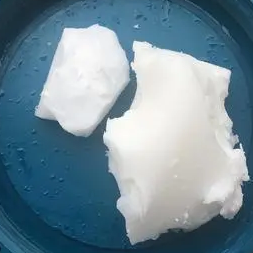**Brew Your Own Herbicide Booster: A Simple Homemade Surfactant Guide**
(How To Make Surfactant For Herbicide)
Plants can be stubborn. Weeds? Even worse. Herbicides help, but sometimes they slide right off leaves like water on a duck’s back. That’s where surfactants come in. Think of them as sticky helpers that make herbicides cling to plants. Store-bought surfactants work, but making your own is cheaper and surprisingly easy. Let’s get into it.
First, know what a surfactant does. It breaks surface tension. Imagine rainwater beading up on a car windshield. A surfactant acts like soap in that scenario—it makes the water spread out instead of forming droplets. For herbicides, this means better coverage and absorption. No fancy lab needed. You can mix one up with stuff you probably have at home.
Here’s what you’ll need: a liquid soap (like dish soap), water, and optionally, vinegar or vegetable oil. Avoid soaps with lotions or heavy fragrances—simple is better. Some folks add a spoonful of cooking oil to the mix. It helps the solution stick longer.
Start with water. Use a clean bucket or jug. Pour in one gallon of water. Room temperature works fine. Next, add soap. Two tablespoons is a good start. Stir gently. Too much soap can create excess foam, which isn’t helpful. If you’re using oil, add a tablespoon now. Stir again until everything blends smoothly.
Vinegar is optional but useful. It boosts the surfactant’s ability to penetrate waxy leaf surfaces. Add a cup of white vinegar if you want this extra kick. Mix well. Now test your concoction. Spray a little on a leaf. If it forms a thin, even layer without beading, you’re golden. If it pools, add a bit more soap and test again.
Timing matters. Use your homemade surfactant right after mixing. Letting it sit too long can cause ingredients to separate. Shake or stir it before each use. Apply it with your herbicide according to the product’s instructions. Usually, you’ll add a cup of surfactant mix per gallon of herbicide.
Safety first. Wear gloves. Even natural ingredients can irritate skin. Keep the mix away from kids and pets. Avoid spraying on windy days—you don’t want drift hitting plants you like. Test it on a small area first. Some plants might react badly to soap or vinegar.
Why bother making your own? Cost is a big reason. Store surfactants add up over time. Homemade versions cost pennies. Plus, you control the ingredients. No mystery chemicals. Customize the recipe too. Try adjusting soap or oil amounts to suit different plants or herbicides.
Does it work as well as commercial products? For most home uses, yes. Industrial surfactants might have extra additives for specific conditions, but for gardens or small farms, this DIY mix does the job. Farmers have used soap-based surfactants for decades. Science backs it too—studies show soap reduces water’s surface tension effectively.
One downside: homemade surfactants might not last as long. Heat or sunlight can break them down faster. Mix small batches. Use them quickly. Store leftovers in a cool, dark place if you must, but fresh is best.
Experimentation helps. Some plants have thicker cuticles. Try adding a bit more oil. Others might need less soap. Keep notes. Adjust ratios based on what you see. Over time, you’ll dial in the perfect recipe for your needs.
Remember, surfactants aren’t herbicides. They’re sidekicks. They help the main ingredient work better. Pair your DIY surfactant with a quality herbicide. Follow label rates. Don’t skip steps like proper spraying techniques.
Got hard water? It can interfere with soap. If your water is mineral-heavy, use distilled water instead. Soft water mixes better. If your surfactant gets cloudy, don’t panic. It’s normal. Just stir it before using.
(How To Make Surfactant For Herbicide)
In the end, it’s about simplicity. You’re not brewing rocket fuel. You’re mixing a helper liquid to make weeding easier. Keep it basic. Tweak as you go. Plants won’t know the difference, but your wallet might.
Inquiry us
if you want to want to know more, please feel free to contact us. (nanotrun@yahoo.com)




